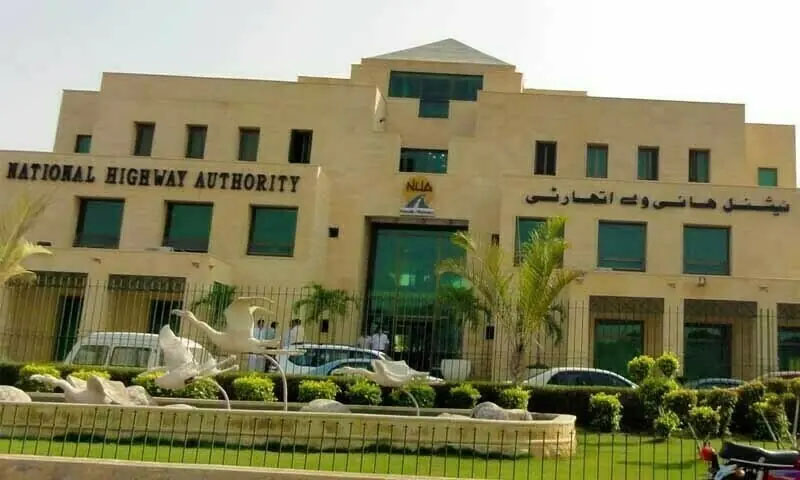- Web Desk
- Today
Evaluating Pakistan’s ‘Digital Gender Inclusion Strategy’
-

- Web Desk
- May 31, 2024

By: Syeda Masooma
In March of this year, the Pakistan Telecommunication Authority (PTA) unveiled its “Digital Gender Inclusion Strategy.” The accompanying statement highlighted the need for a comprehensive approach to address the barriers women face in accessing digital technology. This approach includes enhancing digital literacy, improving affordability, investing in relevant content and services, ensuring online safety, and challenging prevailing social norms.
Since its publication, the policy has sparked considerable debate among industry experts, gender rights activists, and policy think tanks in Pakistan. While the initiative has been welcomed, many experts argue that the document falls short of expectations.
Mobile technology is the primary means of internet access in Pakistan, yet women significantly lag behind men in mobile phone ownership and usage. The GSMA’s Mobile Gender Gap Report 2022 indicates that women in Pakistan are 33 percent less likely than men to own a mobile phone and 38 per cent less likely to use mobile internet. The barriers preventing women from accessing and utilising mobile phones and the internet are multifaceted and interconnected.
Govt launches programme to digitally train and certify teachers
The GSMA report also revealed that women are more likely than men to perceive mobile handsets, packages, and the internet as unaffordable, highlighting the greater financial constraints they face. Challenges such as access to networks, handsets, formal identification documents (IDs), sales agents, training, and electricity further exacerbate the situation. Additionally, the taxation on telecommunication services, which raises costs for both companies and consumers, disproportionately affects women due to their lower incomes and financial independence.
Given these well-documented challenges, the government was expected to create a policy addressing these issues comprehensively and offering a clear course of action to enable greater gender integration.
However, the published document offers general policy suggestions without accounting for the nuances and challenges of their implementation. An example could be where the PTA’s report acknowledges the paradoxical relationship between digital technology and women’s safety, but the recommendations are limited in their scope to address the problem.
While, the policy suggests a review of PECA and the FIA’s engagement process and includes promising elements like a behaviour change campaign and integrating women’s digital literacy into public sector programmes like Ehsaas, it lacks plans to incorporate digital literacy into the public school curriculum.
So what can be done about it?
Recently, a policy roundtable organised by the think tank Tabadlab brought together industry leaders and experts to discuss the PTA’s strategy. During the roundtable, experts noted several shortcomings in the policy and how to improve them.
AJK and G-B hit over 100pc teledensity: PTA
One of the experts, Co-founder and General Partner at i2i Ventures, Kalsoom Lakhani, said that while PTA’s strategy highlights challenges such as women’s lack of control over their access to digital resources, it doesn’t delve into how the solutions are to be implemented. “Even if solutions are designed for women, their potential might not be realised unless they can actively participate. The strategy should be realigned to benefit women without overburdening them to become agents of their own change.”
Kalsoom points out that the current framework of the strategy focuses on outputs, such as the number of women graduating from boot camps, rather than outcomes, like the tangible benefits for these women. To ensure long-term impact beyond political regimes, strategies should be designed with institutional support and a focus on sustainable outcomes.
CEO and Co-founder Oraan Halima Iqbal stressed the importance of involving decision-makers within households to positively influence behaviour and drive meaningful change. She said, we need to see “whether the people making the policy kept women in mind when designing it… When we try to bring about behavioral change, we need to look at it from a systematic shared responsibility perspective. You have to make sure that you include the decision-makers of households as part of the change. In large parts from the digital perspective, it is the man who is making the decision whether the woman can have the phone or not or what she can freely access.”
“You also need to look at it from a holistic perspective: are there any policies that pre-exist and hamper this strategy from coming into place?,” she added.
Pakistan considering moving towards digital currency: finance minister
Speaking on industrial perceptions of the strategy, COO, Mobilink Microfinance Bank, Haaris Mahmood Chaudhary said, “When we talk about the digital divide from an industry point of view, we need to build the digital infrastructure. On that note, we have the lowest ARPU [average revenue per user] in the region, and we have the highest taxes in the region. This results in telecom operators not heavily investing in the region and not investing in optic fiber, which is the true essence of connectivity. Secondly, smartphones are heavily taxed, and this brings the cost very high, which is going to not allow for these gaps to be bridged, and this is not going to be an enabler for this policy. Along with this policy, there need to be some leeways implemented to help this strategy succeed.”
Sadaffe Abid, CEO Founder and CEO, CIRCLE Women Association, emphasised the importance of making digital literacy accessible to women, proposing targeted initiatives that reach women in both semi-urban and rural areas. “We must ensure that digital literacy programmes are tailored to the needs of women and accessible in their communities,” she stressed.
She added, “A system of digital literacy programs that target schools and can help integrate them sooner and earlier is the move”.
Another notable point was mentioned by Director of Centre for Gender and Public Health Tabadlab, Samia Liaquat, who said that PTA should set up one committee rather than six so that gender can be integrated across different streams with one vision. “The committee should have a mix of people – from business, gender experts, social entrepreneurs, and not simply be linked to government departments.”
Pakistan to launch second communication satellite Paksat MM1
“The Ministry of Information Technology and Telecommunications (MoIT&T) should take the lead in doing this work,” she added.
HUM News English contacted PTA for a response to criticisms from the private sector.
Speaking on the issue of working groups in the strategy not showing representation from housewives or women from rural areas, PTA Director Public Relations Malahat Obaid said that the Terms of Reference (TORs) for the working groups have yet to be established by the stakeholder of that specific group and only outcome and impact has been identified at the moment, which will further streamline the strategy implementation process. “Issues such as women’s access to mobile handsets and affordability of digital products are already included in the PTA’s list of issues, with action points to resolve them”.
Obaid is also secretary to the digital gender inclusion committee at PTA. In this role, she mentioned that while the working groups might not directly include women who are not part of the workforce, uneducated, or from remote areas, their opinions and problems were considered through physical surveys conducted in remote areas of Khyber Pakhtunkhwa and Sindh. “Additionally, an IVR-based survey was conducted by telecom operators Jazz and Ufone, reaching approximately 115,000 mobile phone users through random sampling, including women who are not educated or part of the workforce”.
Obaid added that the National Vocational and Technical Training Commission (NAVTTC) and Mobile operators will be responsible for training housewives and women with limited access to digital products once the TORs for the working groups are finalised.
She added that these private sector discussions did not include PTA, which if done could have allowed PTA to better explain the details, “as a written strategy document can only cover so much. Those formulating the strategy have a better understanding of the background and ancillary details”.
On the issue of collaboration within the government departments and the incorporation of digitisation and women’s inclusion, Obaid said that PTA’s role is to ensure area connectivity, not directly engage with other organisations. “However, PTA has shared a letter of intent with the National Commission on the Status of Women (NCSW), which includes training and sensitising government organisations for making digital gender inclusive policies and frameworks in their respective sectors to address the issue of digitalisation of women across Pakistan.”




